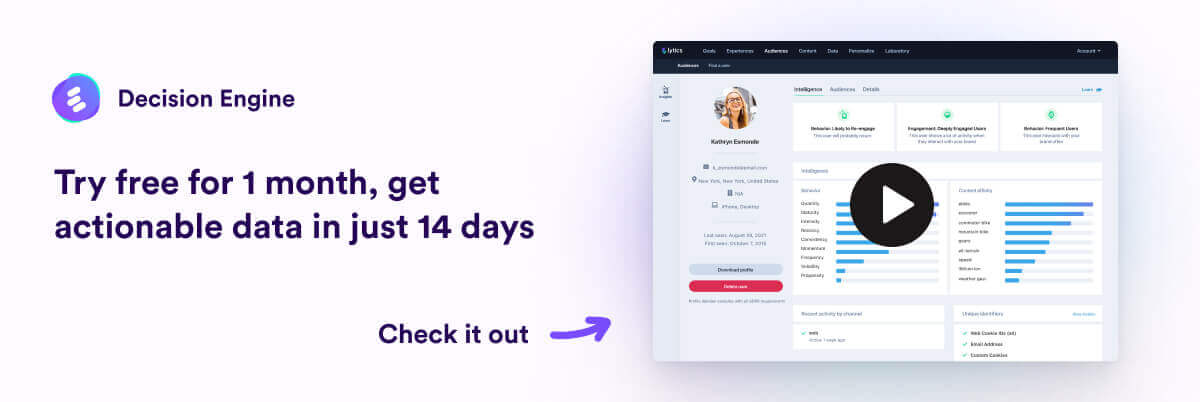3 essential characteristics of a great CX tech stack
May 2, 2022

Ask any marketing leader what’s on the top of their mind, and you’ll likely get the same answer over and over: customer experience (CX). Unfortunately, not many companies are truly experience-led, putting them at a disadvantage.
Forrester Consulting and Adobe found that experience-led companies have:
- 1.6x higher customer satisfaction and brand awareness
- 1.9x higher average order value and return on spend
- 1.7x higher customer retention rates
- 1.5x higher employee satisfaction
So, what’s the secret to becoming an experience-led company and reaping those benefits? An integrated CX stack that combines various marketing technologies.
3 essential characteristics of a great CX tech stack
The time to implement a CX stack is now, and it needs to be distinctive and memorable. Customers who remember their experience will come back again and again. The best customer experiences are powered by a CX tech stack with three characteristics:
1. Personalized
Great customer experiences start with personalization—and almost two-thirds of consumers expect it from your brand. Delivering a personalized experience to your customers means analyzing and learning from their data in real time. Machine learning and AI capabilities are key to power personalization in your CX tech stack.
2. Connected
Brands need to unify their channels to offer a better customer experience. When customers shop online and in store, they provide a 30% higher lifetime value, making omnichannel more important than ever. Your in-store sales reps need to know what your customers are doing online, and your digital promotions need to take into account how they behave in the store.
Providing a unified, connected experience means using customer data from every touchpoint to create real-time profiles.
3. Responsive
You need to be responsive to offer a great customer experience. Meet your customers where they’re at and evolve with them. This responsiveness requires a CX stack that’s agile and allows you to respond to customers instantly. In fact, 36% of marketing leaders say that they can already provide a personalized customer experience in real time with their CX tech stack.
CX stacks: Staying ahead in the age of first-party data
With the right agile CX stack, you can create and maintain the best customer profiles and support the best overall experiences.
You’ve probably heard “right person, right time, right context” over and over, but hitting those three points is becoming more of a challenge for the modern-day marketer.
Thanks to fragmentation, reaching the “right person” is more difficult than ever. And like we saw in 2020, so much can change in an instant, making finding the “right time” an even more urgent issue.
As the environment and customer sentiments continue to change, keeping up with accurate customer profiles is crucial. Meanwhile, with the downfall of third-party data due to privacy concerns, many brands struggle to build their first-party data to replace what they stand to lose.
First-party data is king in the modern marketing world, and controlling that data comes with higher stakes than ever.
An agile CX tech stack helps marketing leaders with all of these aspects. With the right CX stack, marketers can use their first-party data to create real-time, ever-evolving customer profiles. This gives them more say in their relationships with data partners in a way that puts privacy first.
What should you look for in an agile CX tech stack?
So, what does an effective agile CX tech stack look like? Look for these four critical qualities:
1. Speed
To create the best customer experience, your CX stack needs to gather and activate data quickly. For example, if you’re still retargeting a customer a week after they made a new purchase, your CX stack isn’t communicating fast or effectively. Each piece in your tech stack needs to not only process information fast but also pass information along quickly.
2. Coverage
Coverage is crucial for things like identity resolution or any other practice that requires you to match your first-party data against information from other sources. It’s unrealistic to think that a single system can provide you with 100% coverage, so you may need to work with multiple providers to get the perfect CX stack.
3. Accuracy
To target the right individuals and treat each customer to a personalized experience, accuracy is paramount. Especially as third-party cookies disappear, household-level accuracy is essential as many marketers look to householding strategies as an efficient way to better connect with their customers while keeping their privacy.
4. Customization
One-size-fits-all doesn’t work in marketing. You need a CX tech stack that makes managing customer experience in real time easy based on your business’s unique needs. Your stack needs to help you grow and adapt at a speed appropriate for your business as your CX program becomes more complex over time.
Your CX stack needs a customer data platform
There are two reasons why a customer data platform (CDP) is an essential component of a successful CX tech stack:
- It provides you with a single view of the customer. A CDP allows you to identify customer trends and preferences while seeing how they interact with your brand across every channel.
- It makes extracting customer insights easy. A CDP makes it easy to analyze customer data to make truly data-driven decisions that improve the customer experience.
Looking for a CDP that covers the essential characteristics of a great CX tech stack? Get started with Lytics today and start building your new CX stack.



